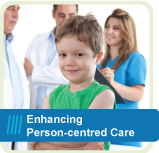Enhancing Person-centred Care
Key Message


Person-Centred Care
Person-centred care is about ensuring the patient/client is at the centre of everything you do with and for them. This means taking into account individual wishes and needs, life circumstances and health choices. It is providing care that is responsive to individual personal preferences, needs and values.
The effective practitioner must be able to identify, examine, challenge and communicate in high quality, person-centred ways. They must ensure that the patient/client is at the centre of every aspect of their care.
As an effective practitioner you should also be aware of the associated strategies and policy such as:
What does this mean for the Effective Practitioner?
The effective practitioner should always advocate for, and strive to deliver, person centred care. The effective practitioner considers the potential positive outcomes when patients are fully invovled and partners in their care.
There are several tools and techniques available to support in delivering person-centred care. You may wish to consider how you, or your team gather patient stories, access specific feedback on care and use effective communication techniques. Please follow the links on this page to explore these further.
![]() You can download a copy of
the Enhancing
person-centred care learning activities.
You can download a copy of
the Enhancing
person-centred care learning activities.
Reflection
Remember, recording your reflections is an important part of the learning process. Take time to structure your thoughts, feelings and any future actions on one the forms available in the Reflective Practice section. Click here to visit the page.
In your reflections you could also consider how your learning relates to the Facilitation of Learning, Leadership and Evidence, Research and Development pillars of practice.
Return to top
